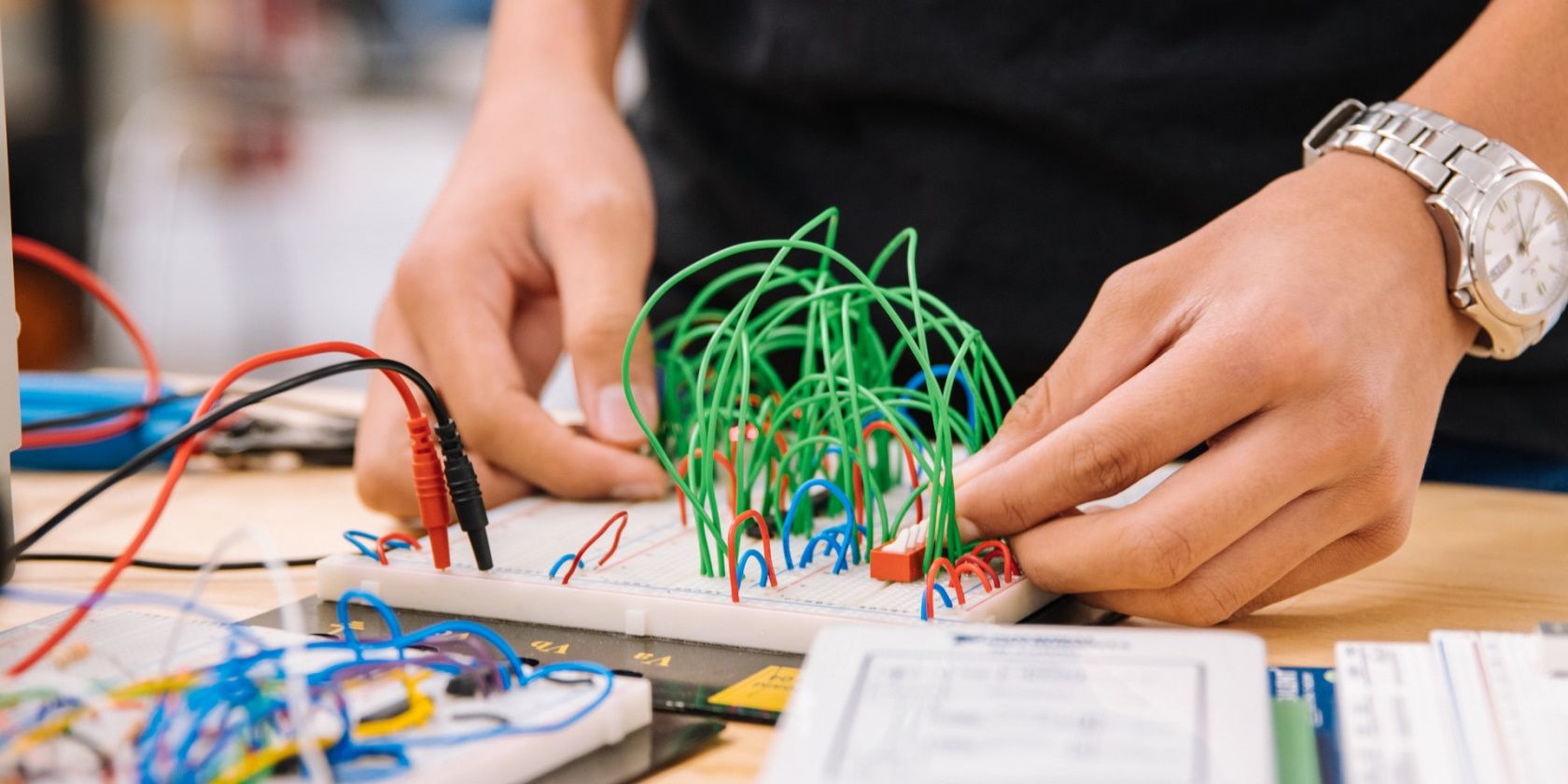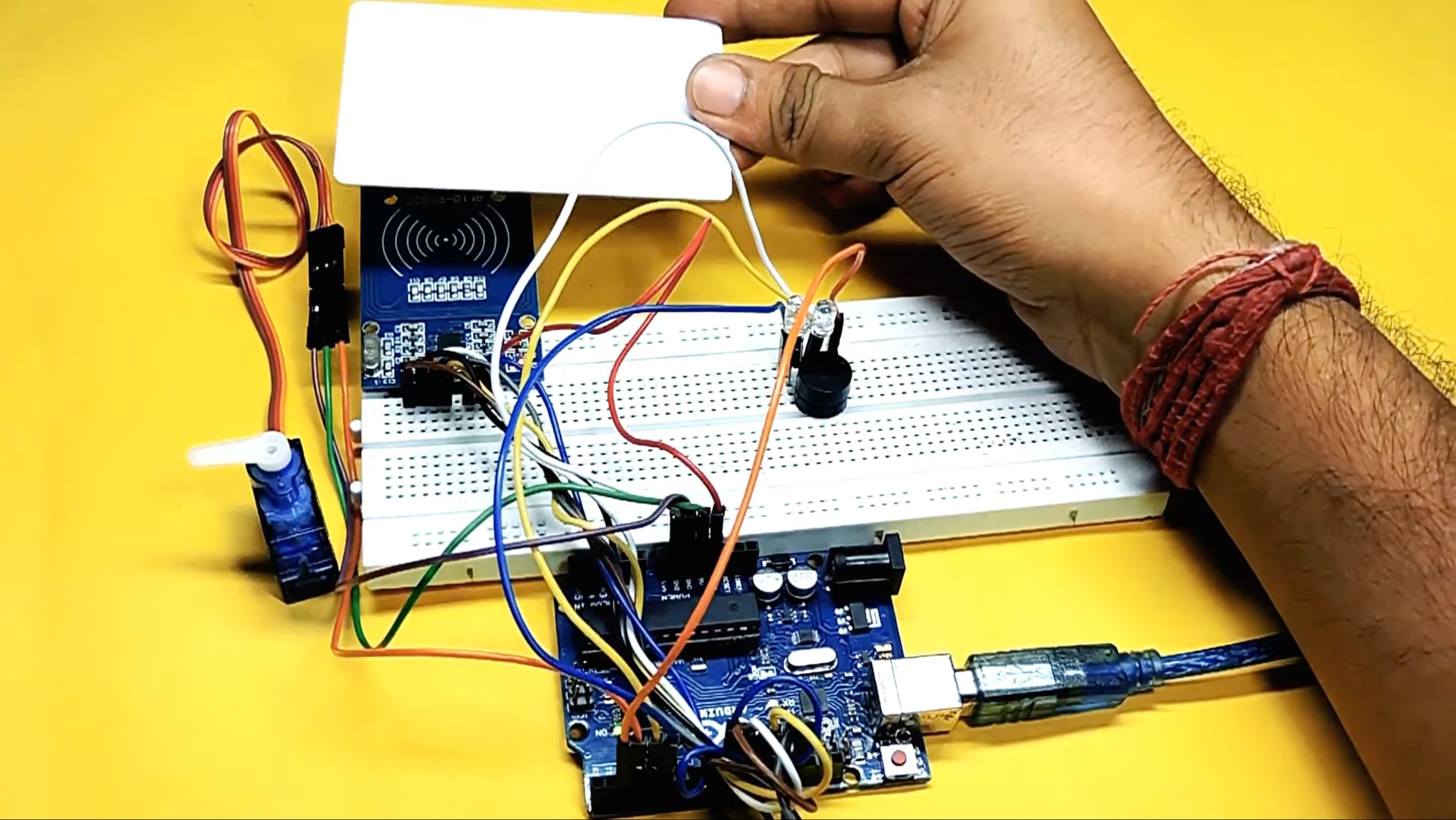Quick Links
If you've checked out the prices of security systems and other niche electronic devices, you know they don't come cheap. But did you know you can create most of these devices with just a handful of tools, electronic circuits, a microcontroller, and basic computer skills?
We've compiled a list of easy and innovative ideas that are perfect hardware projects for engineering students or anyone else who enjoys tinkering with electronics.
1. Circuit Breaker Using Password
If you've ever wondered whether controlling electrical lines using a password is possible, you'll find this project interesting. Using an 8051 microcontroller (Intel MCS-51), you can set up any circuit so that the on/off button is replaced with a password entered on a 4x4 keypad. In this example, a four-channel relay module is used to switch higher-voltage power on and off for four light bulbs.
The concept demonstrated in this project could prove to be a great safety feature for anyone undertaking electrical work, such as professionals maintaining power lines from a substation; the worker would need to enter a password for each line to turn the power supply on and off, making the process a lot safer.
2. Automatic Solar Tracker
Another hardware project perfect for engineering students is this automatic solar tracker. Solar panels receive maximum exposure to sunlight for a few hours every day. You can build your own trackers that follow the sun's direction from morning to evening to ensure your panel receives maximum radiation all day. This ingenious project works with an Arduino Uno microcontroller board, servo, and a few light-dependent resistors.
3. Automatic Room Light Controller
The ability to turn lights on or off without thinking about the actual switch is quite futuristic. Using an Arduino microcontroller, a 5V relay module, and ultrasonic sensors, you can automatically switch on a light when someone enters the room. It keeps track of the number of people in the room, so if everyone leaves, the light is turned off.
As well as being a fun project to test your skills, it's a practical solution for people who frequently forget to turn off their lights before sleeping, only to be hit with huge electricity bills later. If you're worried about how smart light bulbs can put your home network at risk, this DIY electronic project idea is a good alternative.
4. Wireless Lock System Through OTP
Using the same password for your digital locks isn't the most secure way to keep intruders away since they only need to capture it once. However, OTP systems (one-time passwords) present a smart security solution that discards every password after use.
To create this project, you need an Arduino Uno microcontroller, HC-05 Bluetooth module, servo, and Veroboard PCB. The rest of the components are the typical parts of a circuit that you will be familiar with from other electronic hacks.
For this electronic project to work reliably from your phone, you'll need to program the microcontroller and create a simple Android app in the MIT App Inventor. Whenever you need to open a secured door, you'll be prompted to enter a password, which is instantly sent to your phone.
5. PC-Based Home Automation
If you spend long hours on your PC, you've probably wished you could automate certain chores around the house through simple mouse clicks. With an 8051 microcontroller, relay ICs, PCB, LCD, and Keil μVision IDE, you can automate most electrical appliances around you.
The system can be tweaked so that you can monitor the status of every connected component on the desktop. The setup will save you lots of time because you can control a fan, lights, security cameras, and other installations without leaving your desk.
6. RFID-Based Door Access Control
Securing your premises is probably one of your greatest concerns whenever you need to leave the house in the morning, go on errands, or take a holiday. To secure your doors, you can use an 8051 microcontroller coupled with an RFID access management system.
One of the coolest aspects of such a protocol is that you can grant or deny access permissions on the go. It's another great electronics project for engineering students because this technology can be found in many real-life applications. It may even prompt some solutions to the problem of how RFIDs can be hacked.
7. Advanced RFID Door Access Project
One of the most secure access systems you can install on your doors is RFID, which uses radio frequencies at short ranges to identify a tag or card. To set up this project, you need RFID tags, a reader, a transceiver, an Arduino microcontroller, and some antennas. On completion, the mechanism will let you access your house or room by scanning the RFID credentials of a card or tag for a match.
Unlike a barcode system, you don't need to pull out the card once you get close to the secured door since the RFID works automatically to save you time. If you want to give it a go, you can find the complete RFID project tutorial on YouTube.
8. Solar Mobile Phone Charger
Charging your smartphone is probably one of the most inconvenient but necessary routines in your day. A solar mobile phone charger can change this since it can free you from the hassle of competing with everyone for ports and cables. This project uses a 6V mini solar panel, a step-up circuit, and a typical phone charger.
Once everything is set up, you need to position the panel so that it is exposed to sunlight. The benefit of having such a tiny system is that you can always carry it around. For example, if a building blocks the sun, you can go around it and continue charging. This is another excellent electronic project for students, especially when charging ports are in high demand at schools and universities.
9. Fingerprint-Based Security System
Keeping tabs on your possessions, be it your home, equipment, or other items, is one of the easiest ways to remain calm regardless of where you are. A fingerprint-based security system hack can be exactly what you need if you don't want to worry too much about the safety of your stuff.
For securing doors and other important entrances, this project uses an Arduino microcontroller circuit paired with an LCD screen, a fingerprint sensor, and a few motors. What's cool about it is that the door will only open if the fingerprint scanned matches any of the stored ones. With multi-user support, you can even add more fingerprints for your loved ones.
10. Robotic Arm
If you've ever thought about creating a robotic arm for use at home or as a test of your creativity, this hack is for you. The project uses an Arduino microcontroller and a few 3D-printed plastic components to build the arm. You'll also need a custom Android app that will act as the interface with the microcontroller.
On completion, you'll be able to control the joints and gripper of the robot arm to reach various items in your room. The robot arm can be programmed to hand over certain things, such as drinks.
11. Power Generation Through Footstep
You can convert your footsteps into an electric current capable of turning on a lamp or charging a small battery. Using a microcontroller attached to a piezo circuit and a diode, you can step on the setup repeatedly to create electrical power. This hack could be combined with a home treadmill to monitor the intensity of your workout by the glowing diode.
If you have the necessary components and tools, which are cheap to pick up on eBay, you can complete almost all these electronics projects in less than 24 hours. Remember, every hack you work on improves your critical thinking, programming, and hands-on skills, so these are the perfect hardware projects for engineering students.


